The most detailed popular science article on aluminum alloy in 2024.
Huawei Alloy will take you learn what exactly aluminum is in one article
Overview of aluminum
Aluminum (Al) is a metallic element with the element symbol Al and atomic number 13. Its element is a silver-white light metal. It is malleable.
Aluminum metal products are often made into rods, Te mau nota, foils, powders, ribbons and wires. In humid air, an oxide film can be formed to prevent metal corrosion.
Aluminum powder burns violently when heated in the air and emits a dazzling white flame. Easily soluble in dilute sulfuric acid, nitric acid, hydrochloric acid, sodium hydroxide and potassium hydroxide solutions, but insoluble in water.

aluminum alloy
Aluminum content
The content of aluminum in the earth’s crust is second only to oxygen and silicon, with a content of 8.3%, ranking third. It is the most abundant metal element in the earth’s crust. Aluminum reserves rank second among metals. Among metal types, it is the second largest category of metal after steel. Aluminum metal exists mainly as aluminosilicate ores, as well as bauxite and cryolite.
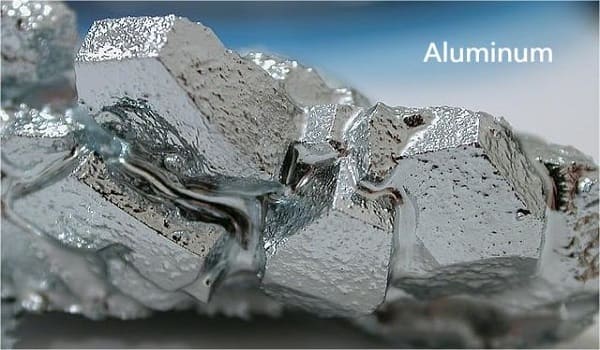
Aluminum content
Aluminum product processing types
Aluminum metal raw materials can be processed into various types of aluminum alloy products. Common types include:
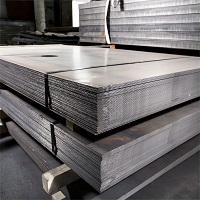 |
 |
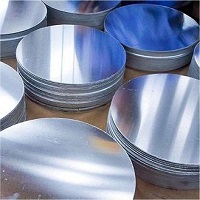 |
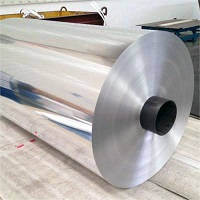 |
Aluminum sheet product
Aluminum foil product
Aluminum coil product
Aluminum circle product
Aluminum strip product
Aluminum sheet product
Aluminum profile product
aluminum ingot product
Aluminum rod product
Aluminum tube product
What is the density of aluminum metal?
Do you know what the density of aluminum is? The theoretical density of aluminum at room temperature is 2698.72g/cubic meter, which is generally recorded as 2.7g/cm³ or 2700kg/m³.
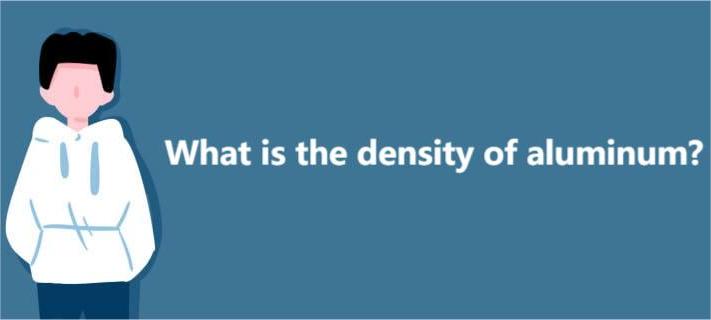
What is the density of aluminum?
The density of aluminum materials changes with the purity. The higher the impurity content or the less aluminum content in the aluminum alloy, the higher the density. The density of pure aluminum is 2700 kilograms per square meter.
The lower density of aluminum metal also gives aluminum better properties. Under the same volume, aluminum is lighter than other metals. This is one of the reasons why aluminum is widely used to make lightweight products.
Effect of aluminum density on aluminum properties
What effect does the lightness of aluminum have on the density of aluminum?
The density of aluminum determines its physical and chemical properties. Due to its lower density, aluminum has good electrical and thermal conductivity. This makes aluminum an ideal material for making electrical wires and heat sinks. Taa ê noa'tu i te reira, the density of aluminum also makes it easy to process and shape, so it is widely used in manufacturing various products such as automobile parts, Te mau tuhaa o te manureva, construction materials, e te tahi atu â.
The density of aluminum also determines the strength and hardness of the aluminum alloy. Although aluminum has a low density, it is very strong and hard. This makes aluminum ideal for making high-strength materials. Ei hi'oraa, aluminum alloys can be used to make structural components for airplanes and cars because of their high strength and lightweight properties.
The density of aluminum also determines its corrosion resistance. Due to the low density of aluminum, its surface is easily oxidized to form an aluminum oxide film. This aluminum oxide film protects the aluminum from further corrosion. No reira, aluminum is widely used to manufacture corrosion-resistant products such as food cans, chemical containers, e te tahi atu â.
The density of aluminum is an important determinant of its physical and chemical properties. Aluminum’s lightweight and high strength make it ideal for manufacturing a variety of products. Aluminum’s corrosion resistance and electrical conductivity make it ideal for manufacturing certain products. The density of aluminum not only affects its properties, but also its range of applications.
Aluminum alloy grades
After processing, aluminum metal is classified according to the purity of the aluminum and can be divided into 1000-8000 anairaa aluminum alloys. Each series has its own characteristics.
1000 Te mau mana'o tauturu no te tuatapaparaa e: Te mau mana'o tauturu no te haapiiraa, with an aluminum content of more than 99%, mai te 1050, 1060, 1100, e te tahi atu â.
2000 Te mau mana'o tauturu no te tuatapaparaa e: Copper is the main alloy element, mai te 2011, 2014, 2017, e te tahi atu â.
3000 Te mau mana'o tauturu no te tuatapaparaa e: Aluminum and manganese are the main alloy elements, mai te 3003, 3004, 3104, e te tahi atu â.
4000 Te mau mana'o tauturu no te tuatapaparaa e: Aluminum and silicon are the main alloy elements, mai te 4047, 4043, e te tahi atu â.
5000 Te mau mana'o tauturu no te tuatapaparaa e: Magnesium is the main alloy element, mai te 5052, 5083, 5086, e te tahi atu â.
6000 Te mau mana'o tauturu no te tuatapaparaa e: Silicon and magnesium are the main alloy elements, mai te 6061, 6063, 6082, e te tahi atu â.
7000 Te mau mana'o tauturu no te tuatapaparaa e: Zinc is the main alloy element, mai te 7075, 7050, e te tahi atu â.
8000 Te mau mana'o tauturu no te tuatapaparaa e: Common alloy models are 8011, 8021, 8079
Each grade of aluminum alloy has different properties and application areas.

aluminum alloy coil
Application of aluminum alloy series
JIS A.A 1000 Te mau mana'o tauturu no te tuatapaparaa e – pure aluminum series
1. 1060 as a conductive material IACS guarantee 61%, faaohipa 6061 wire when strength is required
2. 1085 1080 1070 1050 1N30 1085 1080 1070 1050 – It has good formability and surface treatment properties, and its corrosion resistance is the best among aluminum alloys. Because it is pure aluminum, its strength is low. The higher the purity, the lower the strength. Daily necessities, te mau api 20, Te mau mana'o tauturu no te haapiiraa, reflective panels, Te mau nota, chemical industry containers, Te mau nota, te tapiriraa i te mau niuniu, conductive materials
3. 1100 1200 AL is a general-purpose aluminum material with a purity of 99.0% or above. The appearance after anodization is slightly white and the same as above. General utensils, Te mau nota, Te mau nota, printing boards, te mau materia paturaa, heat exchanger components 1N00 – The strength is slightly higher than 1100, the formability is good, and its chemical properties are the same as 1100.
Daily necessities 2000 Te mau mana'o tauturu no te tuatapaparaa e – AL x Cu series
1. 2011 Free cutting alloy with good machinability and high strength. But the corrosion resistance is not good. When corrosion resistance is required, faaohipa 6062 series alloy volume shafts, optical components, and screw heads.
2. 2014 2017 2024 Contains a large amount of Cu, has poor corrosion resistance, but has high strength. It can be used as a structural material. It can also be used for forged products, Te mau mana'o tauturu no te, gears, oil and pressure components, and wheel axles.
3. After solution heat treatment, 2117 is used as a hinge material. It is an alloy that delays the aging speed at room temperature.
4. 2018 2218 Alloys for forging. It has good forgeability and high high-temperature strength, so it is used for forged products that require heat resistance but have poor corrosion resistance, such as cylinder heads, Te mau nota, and VTR cylinders.
5. 2618 alloy for forging. Excellent high temperature strength but poor corrosion resistance. Pistons, molds for rubber molding, and general heat-resistant components.
6. 2219 e puai rahi to'na, good low-temperature and high-temperature properties, and excellent weldability, but poor corrosion resistance. Cryogenic containers and aerospace equipment.
7. 2025 Alloys for forging. Good forgeability and high strength, but poor corrosion resistance. Propellers, magnetic barrels. 2N01 – Alloy for forging. It has heat resistance and high strength, but has poor corrosion resistance. Aircraft engines and hydraulic components.
3000 Te mau tumu parau – AL x Mn Series
1. The strength of 3003 3203 is about 10% higher than that of 1100, and the formability, weldability and corrosion resistance are all good. General utensils, Te mau nota, Tabula ohipa, te mau hoho'a i patahia, Te mau materia no te haponoraa
2. 3004 3104 has higher strength than 3003, superior formability, and good corrosion resistance. Aluminum cans, light bulb covers, roof panels, colored aluminum panels
3. 3005 The strength of 3005 is about 20% higher than that of 3003, and its corrosion resistance is also better. Building materials, colored aluminum plates
4. 3105 The strength of 3105 is slightly higher than that of 3003, and other characteristics are similar to 3003. Building materials, colored aluminum plates, Te mau nota
4000 Te mau tumu parau – AL x Si Series
1. 4032 has good heat resistance, friction resistance and small thermal expansion coefficient. Piston, cylinder head
2. 4043 has less solidification shrinkage and has a natural gray color after anodizing with sulfuric acid. Welding lines, building panels
5000 Te mau tumu parau – AL x Mg Series
1. The strength of 5005 is the same as that of 3003. It has good processability, Te vai - mâ - raa e te patoiraa i te mau mea atoa. It can be modified well after anodizing and matches the color of 6063 profile. Interior and exterior decoration for buildings, interior decoration for vehicles, and interior decoration for ships
2. 5052 is the most representative alloy with medium strength. It has good corrosion resistance, Te vai-papû-raa e te vai-papû-raa, especially high fatigue strength and good seawater resistance. General sheet metal, Te mau nota, vehicles, paturaa, Te mau nota, honeycomb panels
3. 5652 is an alloy that limits the impurity elements of 5052 and inhibits the separation of hydrogen peroxide. Its other characteristics are the same as those of 5052. Hydrogen peroxide container
4. The strength of 5154 is about 20% higher than that of 5052, and other properties are the same as 5052. Same as 5052, pressure vessel
5. 5254 is an alloy that limits the impurity elements of 5154 and inhibits the decomposition of hydrogen peroxide. Other properties are the same as 5154. hydrogen peroxide container
6. The strength of 5454 is about 20% higher than that of 5052. Its characteristics are roughly the same as those of 5154, but its corrosion resistance in harsh environments is better than that of 5154. car wheels
7. 5056 has excellent corrosion resistance and can be modified by cutting and processing. It has good anodizing and dyeing properties. Camera body, communication device components, zipper
8. The strength of 5082 is similar to that of 5083, and its formability and corrosion resistance are good. jar lid
9. The strength of 5182 is about 5% higher than that of 5082, and other characteristics are the same as 5082. jar lid
10. 5083 alloy for welding structures. It is the highest strength corrosion-resistant alloy among practical non-heat-treatable alloys and is suitable for welding structures. Good seawater resistance and low-temperature characteristics Ships, vehicles, low-temperature containers, Te mau mana'o tauturu no te tuatapaparaa e te haapiiraa
11. 5086 has higher strength than 5154 and is a non-heat treatment alloy for welding structures with good seawater resistance. Ships, Te mau mana'o tauturu no te tuatapaparaa e te haapiiraa, magnetic discs 5N01 – The strength is the same as 3003, and the anodizing treatment after brightening treatment can have high brightness. Excellent formability and corrosion resistance. Kitchen supplies, cameras, Te mau nota, te mau api 20. 5N02 alloy for hinge nails, with good seawater resistance.
6000 Te mau tumu parau – AL x Mg x Si Series
1. 6061 heat-treated corrosion-resistant alloy. Treatment with T6 can have a very high endurance value, but the strength of the welding interface is low, so it is used in screws, hinges, Te mau nota, vehicles, and land structures. 6N01 is a medium-strength extrusion alloy with a strength between 6061 e 6063. , the extrusion, stamping and quenching properties are good, and it can be used to make large thin-shaped materials with complex shapes. It has good corrosion resistance and weldability. Te mau pereoo uira, land structures, Te mau nota
2. 6063 is a representative alloy for extrusion. Its strength is lower than 6061. It has good extrudability. It can be used as shapes with complex cross-section shapes. It has good corrosion resistance and surface treatment properties. It is used in construction, highway guardrails, high railings, vehicles, e te tahi atu â. Furniture, te mau matini no te fare, Te mau nota
3. 6101 high-strength conductive material. 55% IACS guaranteed wire
4. 6151 has particularly good forging processability, corrosion resistance and surface treatment properties, and is suitable for complex forged products. Machinery and automotive components
5. 6262 corrosion-resistant free cutting alloy, its corrosion resistance and surface treatment properties are better than 2011, and its strength is the same as 6061. Camera body, oxidizer assembly, brake assembly, gas appliance assembly
7000 Te mau tumu parau – AL x Zn x Mg Series
1. 7072 has low electrode potential and is mainly used for anti-corrosion covering leather materials. It is also suitable for heat sinks of heat exchangers. Aluminum alloy sheet leather, heat sink
2. 7075 aluminum alloy is one of the highest strength alloys, but has poor corrosion resistance. Covering it with 7072 leather can improve its corrosion resistance, but the cost increases. Aircraft and ski poles 7050 7050 An alloy that improves the hardenability of 7075. It has good resistance to stress corrosion cracking. It is suitable for thick plates, forged aircraft, and high-speed rotating bodies. 7N01 alloy for welding structures. It has high strength and the strength of the welded part can be placed at room temperature. After returning to the strength close to the base material. Corrosion resistance is also very good. Te mau pereoo uira, other land structures, Te mau mana'o tauturu no te
3. 7003 is an extrusion alloy used for welding structures. Its strength is slightly lower than that of 7N01, but its extrudability is good and it can be made into thin and large shapes. Its other characteristics are roughly the same as 7N01.
Aluminum alloy thickness
Aluminum thickness ranges vary depending on its purpose and can be used in a variety of applications such as construction, Te mau mana'o tauturu no te haapiiraa, automotive manufacturing, Te mau nota, e te tahi atu â. Here are some common aluminum thickness ranges:
Thickness of aluminum used in construction:
Exterior wall decorative panels: usually between 2mm and 6mm.
Roof Sheets: Typically between 0.7mm and 3mm.
Aluminum door and window frames: usually between 1mm and 3mm.
Aluminum thickness used in aerospace:
Aircraft shell: usually between 0.1mm and 10mm, depending on the requirements of different parts.
Aircraft structural parts: usually between 1mm and 20mm, and also vary according to the requirements of different parts.
Thickness of aluminum used in automobile manufacturing:
Body panels: usually between 0.5mm and 3mm.
Engine parts: usually between 1mm and 10mm.
Thickness of aluminum used for packaging:
Aluminum foil: usually very thin, can be as small as a few microns, 0.0005-0.05Te mau mana'o tauturu no te.
The specific thickness requirements usually depend on the usage scenario, and Huawei Alloy can provide the corresponding thickness according to customer needs.
Aluminum alloy width
The width range of aluminum alloys also depends on its specific use and production standards. Different product types have different width specifications.
Aluminum plate:
Usually the available width is between 1 meter and 2.5 Te mau mana'o tauturu no te, and we can customize the width according to the customer’s needs.
Aluminum coils:
The width of aluminum coils usually ranges from tens of millimeters to several meters, depending on product specifications and production equipment.
Aluminum profile:
Aluminum profiles are available in a wide range of widths, from a few millimeters to hundreds of millimeters, depending on the shape and purpose of the profile.
Aluminum foil:
The width of aluminum foil usually ranges from tens of millimeters to several meters, depending on the use, such as packaging or electrical insulation.
Aluminum alloy properties
Aluminum alloys are widely used in various industries due to their good combination of properties. The specific properties of aluminum alloys may vary depending on alloying elements, heat treatment and manufacturing processes.
Te mau mea iti ha'iha'i roa: Aluminum’s low density makes it a lightweight material. This property is particularly advantageous in applications where weight is a critical factor, such as in the aerospace and automotive industries.
Te puai rahi: Although aluminum is not as strong as other metals such as steel, aluminum alloys can be designed to have high strength. Alloying elements and heat treatment processes are used to increase the strength of aluminum.
Te patoiraa i te patoiraa: Aluminum has excellent corrosion resistance, mainly due to the thin protective oxide layer formed on its surface.
Te peu maitai i te pae no te haerea: Aluminum is a good conductor of electricity.
Thermal conductivity: Aluminum alloy has good thermal conductivity.
Te vai-ti'amâ-raa: Aluminum can be easily formed into various shapes through processes such as extrusion, rolling and forging.
Non-magnetic: Aluminum is non-magnetic, which is an important property in applications where magnetic interference is a concern.
Recyclability: Aluminum is highly recyclable without losing its original properties. back,
Reflectivity: Aluminum has good reflectivity for both visible light and thermal radiation. This property is used in applications such as reflective coatings and solar reflectors.
Te aravihi i te pae no te mau aravihi: Aluminum alloys are generally easy to machine, which contributes to their widespread use in a variety of manufacturing processes.
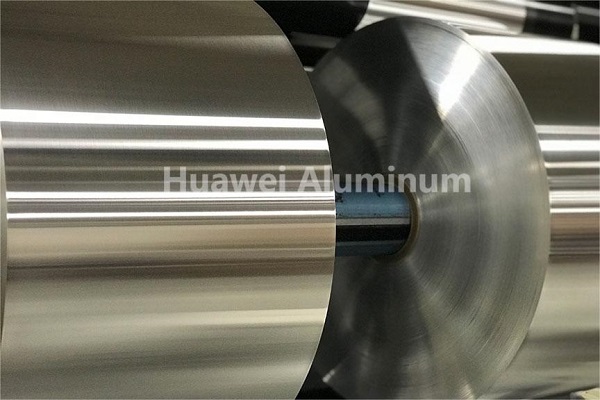
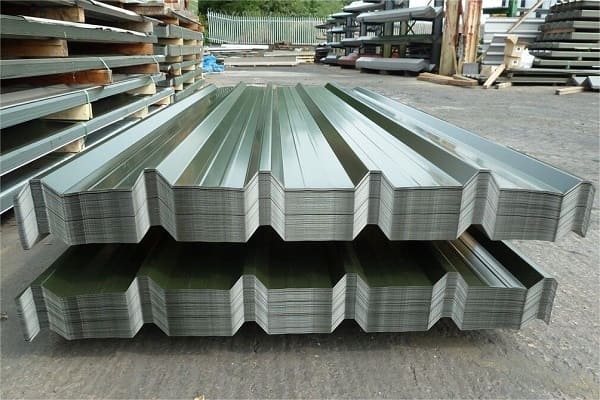


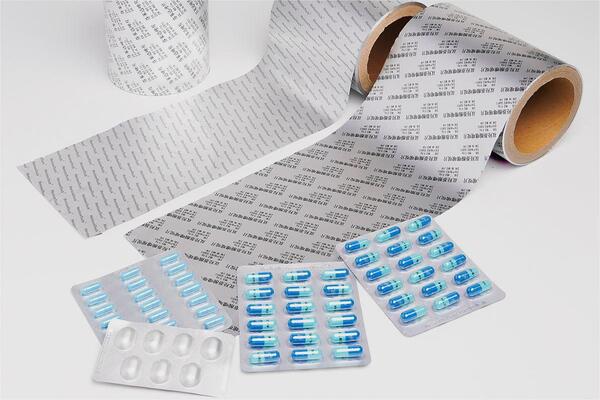




A vaiiho i te hoê pahonoraa